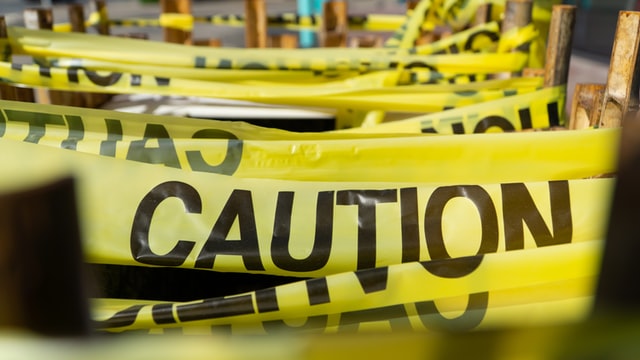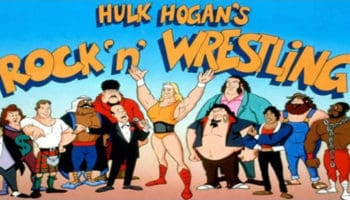
What happens when you take members of the public and put them into high-risk, movie-level stunts? You get the Late Late Breakfast Show and the terrible tragedy that unfortunately resulted in death.
The Late Late Breakfast Show incident of 1986 involved a regular citizen named Micheal Lush falling to his death while training for a stunt on the show. Many asked how this could happen and why there weren’t more safety precautions taken.
If you’re from the U.K. and grew up in the 80s, I’m sure you remember this. If you live outside the UK, it’s a fascinating story that is hard to believe actually happened. It also harkens back to an era where precautions were not at the forefront, legalities weren’t as prominent, and more risks were taken.
The tragedy that occurred on the BBC’s Late Late Breakfast Show was not only a terrible accident but would create reform in broadcasting still followed to this day.
What Was the Late Late Breakfast Show?
If you live outside the UK, there’s a good chance you’ve never heard of this show. But every country seems to have its own version of it.
Despite being called a “breakfast show,” the Late Late Breakfast Show was actually broadcast on Saturday nights. Except for sports, Saturday nights during prime time aren’t a big night for North American TV. Even SNL doesn’t come on until way after prime time.
Everyone tends to be out on Saturday nights, and it’s just not worth airing anything hoping to attract big ratings. American networks learned early on to not air anything too significant on Saturday nights. But in the UK, Saturday nights have always been a big television night. This was especially the case in the 1970s and 80s.
Some of the biggest ratings of the week took place on Saturday nights. And in the 70s and 80s, there was no internet, streaming services, or even home video. The only thing people had for entertainment was the TV, and Saturday nights were one of the few nights in the week when the whole family was together.
I’m Canadian, but partly grew up in England during the 80s, so I can attest to this.
On a Saturday night in the late 70s and early 80s, more than half of the country was watching TV. There was a massive audience out there, and the BBC would try to go after it with the Late Late Breakfast Show.
The easiest way to sum up the Late Late Breakfast Show is like the old days of David Letterman. It was a variety show that started on September 4th, 1982. It would be hosted by Noel Edmonds, who was a former BBC 1 radio DJ.
Co-hosts included Scottish actress Leni Harper, along with Michael Smith or “Smitty,” and John Peel, another BBC radio DJ.
The show struggled at first but then found its groove as a great way to feature popular musical acts. ABBA appeared on the show a few times and their last ever appearance was on The Late Late Breakfast Show.
The show also featured comedy bits and hidden camera gags along with the big pop music performances. There was even a controversial situation with Paul McCartney that ended up pissing off Olivia Newton-John–which is the most 1980s sentence I’ve ever said. But that’s a story for another time, now off to bed…
Oh, you’re not tired? OK, we’ll carry on… The main thing is, people were very aware of The Late Late Breakfast Show.
Give it a Whirl
One popular segment of the Late Late Breakfast Show was a segment called “Give it a Whirl.” Viewers at home could phone in to have the “Whirly Wheel” spun. This was a big Price is Right-style wheel that landed on various stunts.
The viewer, with the stunt selected, was given a week to train for it before appearing on the next week’s show to perform it. You can already see what a ridiculous idea this was. It has shades of “Stupid Human Tricks” from Letterman.
This was the ultimate “don’t try this at home” feature.
But some of these stunts were legitimately terrifying and definitely not for a member of the general public to perform. Some stunts included jumping a car through a giant hoop engulfed in flames. Another one involved a member of the public riding a motorcycle on the “wall of death,” which was like a giant roulette wheel.
Another stunt would involve–yet again–a member of the public being pulled by helicopter from a chimney before it exploded. Someone thankfully canceled this one when it was protested enough by the government’s health and safety division.
Another involved a woman named Barbara Sleeman. In 1983, they fired her out of a cannon. Fortunately, she only broke her shoulder.
How the hell was this able to take place? Well, just like Action Park in New Jersey, this was the 1980s and the regulations we have today weren’t always as a thing back then. It would be situations involving the Late Late Breakfast Show that would put into place the regulations that seemed obvious.
It’s not like people weren’t speaking up against this. The BBC was threatened with legal action by the Health and Safety Executive, which was a UK government agency. The threats resulted in nothing, and somehow, the show could carry on.
The BBC even doubled down on the danger by declaring their show to feature “some of the most daring feats ever seen on British TV.”
If you know anything about the BBC today, they are a place where there seems to be more regulations and restrictions than any other network in the world. But in 1986, it was all about attracting the most viewers possible–and danger was a great way to draw them in.
The Car Crash
There was one stunt that at least involved a professional. This was to see how far a car could jump. Could a car be jumped over 230 feet? Spoiler alert: no, no,it couldn’t.
In 1983, stunt driver Richard Smith would give it a go. In a very Evel Knievel design, A ramp was set up with cars underneath to see how far the jumping car could travel. I always wondered why other cars are seen as some sort of ideal landing object. Would some crash pads not be a better option?
On live TV, Smith would hit the ramp going 140 mp/h causing the car to somersault in the air and barely land on the cars below, ricocheting off onto the pavement. Emergency crews rushed out to a completely decimated car–all of which was seen on live television.
How Smith survived was nothing short of a miracle and host Noel Edmonds had to keep the show going, not knowing if Smith was still alive. It’s not that Smith walked away; he broke his pelvis and injured his back, neck, and head.
Speaking of England and car crashes, another car-related incident would happen years later when Richard Hammond of Top Gear attempted to hit the land speed record in a rocket car before a tire blew out causing it to flip upside down at nearly 370 MP/h.
You would think that this near-death incident would cause the show to take a few steps back. But no, it didn’t. And at least this car crash incident was with a trained professional and not a member of the general public.
That would all change in 1986.
The Michael Lush Incident
So, legal threats had been made, but that’s as far as they went. No action was taken, and things were left to function as they always had. The dangerous stunts would continue.
Michael Lush was 24 years old and was from Southampton. His girlfriend would be the one to put him up for the Whirly Wheel. On November 8, 1986, Rush would be called up live by the Late Late Breakfast Show.
Rush had landed on the stunt called “Hang ‘em High,” and would appear on the show on November 15th. Rush was excited and was the type who seemed to want to take physical risks.
Hang ‘em High was like a Harry Houdini stunt in that it involved being tied up in chains and a straightjacket and trying to escape. But when you did, this stunt then involved jumping from an extreme height with a bungee cord from a box before it exploded.
A crane would suspend the box 120 feet in the air–with no airbag below in case something went wrong. I don’t remember Houdini trying that one.
Lush didn’t even start training for the stunt until the 13th. Besides the lack of airbags for the training, there were some other issues.
The first was that a professional stuntman had not even tried the stunt yet to see if it was not only doable but too dangerous to perform. The production team offered one of their own staff to try it out first, but Lush wanted to get going and get as much practice as he could. After all, millions of people were going to be watching this live.
Also, the BBC had an “expert” there (more on this in a moment) so Lush could be assured he was in expert hands. But as they began to rehearse this stunt, Lush had no communication with the ground.
That seemed a little concerning. But at least he had a safety harness and safety helmet. But was every safety precaution possible being used?
Besides the “expert,” surely there would be some safety personnel or compliance officers on hand to monitor this whole thing? It turns out there wasn’t. The show had a safety officer–many of them, in fact–but no one was around on the first day Lush began his training.
Lush would practice the escape-artist part of the trick later on. Right now, it was about the bungee jump and the exploding box. Again, Lush was not a trained stuntman, had never bungee jumped, and was now standing 120 feet in the air suspended in a box by a crane.
Lush was understandably nervous and took two minutes to even proceed with the stunt. Remember, he hadn’t even seen the stunt demonstrated. I get nervous at the top of a stepladder so I can’t even begin to understand what he must have been feeling. Even if he didn’t want to do it, he was so high up he couldn’t communicate with the crane or anyone below.
Something Goes Terribly Wrong
The Late Late Breakfast Show claimed to use state-of-the-art equipment in their stunts. One of these alleged state-of-the-art pieces of equipment was the bungee carabiner clip. You probably know what I mean as these are the clip hooks that can easily attach, and detach a rope.
The clip was attached to the crane, but it sprang loose. Lush hit the ground from 120 feet high and instantly died. The bungee cord had done nothing and landed on the ground next to him.
So what happened? When you go back and read about the history of this tragedy, they stated that the clip only needed the weight of a bag of sugar to be forced open. How was this possible? Did no one check this beforehand?
It turns out the “expert” they used wasn’t exactly a bungee or climbing expert. The person had experience with special effects and theatrical tricks but had never been involved with this type of stunt. There were no equipment experts to double-check that everything was functioning properly.
And here’s a baffling one: there wasn’t even an ambulance or emergency crews on hand.
An inquest obviously took place. One of the first things they did was test that carabiner clip to see what happened. They tested the clip 20 different times, and on 14 of the tests, the clip sprang loose.
Then there was the issue with the bungee cord itself. I know nothing about bungee jumping, but I do know the cord is supposed to be elasticized. Was something different inadvertently used?
Bungee specialists–including ones who pioneered modern bungee jumping in the UK–had said that they had attempted a similar stunt using three ropes and not just one. One was all that Lush had. It turns out these specialists had warned the BBC that stunts like this without the proper consultation could result in death.
The BBC was then called out by other stunt performers, including Jim Dowdall who has performed stunts in several huge blockbuster movies and is known as the “stuntman to the stars” said there was no way a member of the public should have attempted this.
The Aftermath
The inquisition found a lot of errors involved with the bungee stunt. This time, the Health and Safety Executive was able to prosecute the BBC.
But the fine would only be 2,000 pounds.
The BBC contributed over 120,000 pounds to the family of Michael Lush. Converted for today, and into American money, that’s over $400,000.
Through the investigation, they revealed that a stunt like this wouldn’t even have been performed by a professional unless it had airbags. And we have to again point out: a member of the public did this with no previous experience.
They also pointed out that even with professionals, a stunt like this would have taken weeks. A non-professional was only given a few days. The show had not taken the proper safety precautions and any discussions of the stunt with a safety officer had happened over the phone.
Again, that safety officer wasn’t even there the day of the rehearsal.
The Late Late Breakfast Show tragedy would have many implications. First, the show was immediately canceled. Next, the event would have a massive impact on the future of broadcasting in the UK, and around the world.
The BBC would move away from any stunts that involved a member of the general public. Safety regulations would go through the roof, and other networks would learn that risks made in the interest of higher ratings were incredibly irresponsible–and illegal.
You would obviously see nothing like this today. It’s impossible to even imagine something like this taking place. We are so used to the legalities of every little thing that a stunt like this doesn’t even seem feasible. Even if a member of the general public was used in something similar, there would be months of preparation and professional training, insane precautions, and so much insurance it would make your head spin.
Final Thoughts

Safety regulations and precautions are obviously par for the course today. It’s hard to imagine a time when they weren’t always a priority. But, like Action Park, this was just how things were in the 1970s and 80s. Check out my article all about the story of Action Park here.
The BBC was trying to stand out during a very competitive Saturday night, and death-defying stunts appeared to be the way to do this. The problem with this is you have to always one-up yourself. People get bored when they keep seeing the same thing, so you have to push the boundaries to keep them engaged.
Eventually, you push it so far that there’s no coming back. This was the horrific case with Michael Lush and the Late Late Breakfast Show. It was a tragedy that should have never happened, but at least served as a warning for any other productions that dare considered such an outrageous risk.



